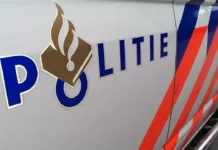A new museum is in the works in Eindhoven to commemorate the tragic family story of the Hornemann family. The Jewish family perished during the Holocaust. A story that must be told, according to survivor and initiator Martijn Docters, but lack of money is now throwing a spanner in the works.
Full of good hope, Martijn began building a pop-up location on Hurksestraat months ago, but just before the dreamed-of opening date of 18 September, the project foundered, at least temporarily. “We are about €20,000 short of finishing the five rooms”, Docters says visibly emotional. Indeed, for him, the three-hundred-square-metres space containing a museum, a dilemma room and an information centre is much more than that. It is his way of honouring his family members who died horribly during the war. Something that happened nearly 80 years ago, but still makes a huge impression on him.
“That still breaks me when I think back to what Edo and Lexje, but also Bets and Flip went through”, Martijn explains. Before the war, the family led a carefree existence on Staringstraat in Gestel. After the German invasion in May 1940, everything changed. More and more laws were introduced to make the lives of Jews and so-called other “Untermenschen” impossible. At one point, mother Bets and her sons decided to go into hiding when father Flip was deported. However, this was not for long, because according to Flip’s employer, Philips, things would not be so bad in camp Vught. The family gave in and reported. That was the beginning of the nightmare.
From Vught camp to an abandoned schoolhouse
The family spent nine months in camp Vught. During that time, father Flip would see his sons and wife one last time. He eventually died of cold and malnutrition somewhere in Central Europe. Bets would not survive the war either. She was taken with Edo and Lexje via Westerbork camp to Auschwitz concentration camp. There she would succumb to typhoid fever.
For the children, hell was not yet over. The notorious German doctor Josef Mengele selected Lexje and Edo and put them on a transport to Neuengamme concentration camp. A trip in a cattle car under deplorable conditions that lasted three days. “The camp doctor wanted to conduct medical tests, but thought it was pathetic to try those tests on rats. So Lexje, Edo and 18 other children were put in a separate barracks and used as guinea pigs. For months those medical experiments lasted, and at night that man went to his own family with young children as if nothing had happened. I don’t think he could spell the word conscience”.
On the eve of liberation, 20 April, 1945, things got too hot for the Germans. Adolf Hitler ordered that all traces of atrocities be erased, so eight-year-old Lexje and twelve-year-old Edo were taken by truck to an abandoned school building in Hamburg. In that building, the 20 children were horribly murdered. They were hanged and then their bodies were burned. “The terrible thing is that many of those involved were never punished. One even became a pediatrician in the German Democratic Republic (GDR) after the war, and enjoyed prestige there”.
Genocide not something of the past
With the pop-up location, Martijn Docters not only wants to ensure that the horrors of World War II are not forgotten. “I want to make people aware that genocide is not something of the past, but is still happening. Just a week ago a mass grave was found in Ukraine. In that regard, we have learned nothing as humanity. So I hope to make visitors think about their own role. ‘Would you betray your neighbour or would you help him?'”
At least that is the intention, because the arrival of the temporary Hornemann House is still in doubt. In fact, €20,000 are still needed to connect the dots, which is why a crowdfunding campaign has been launched. The plan is for the Holocaust Museum to open its doors in October.
Source: Studio040
Translated by: Bob
















